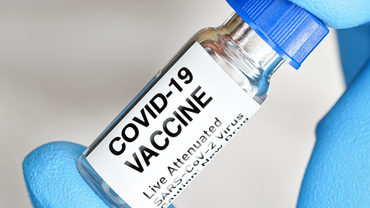A second booster could avert a substantial proportion of COVID-19 deaths between now and mid-autumn 2022 in older age groups
A continuous high incidence or a large surge in cases in the early summer would imply a large benefit from an early second booster roll-out but optimal timing will largely depend on trends in infections ECDC says in the latest technical report on a second mRNA COVID-19 vaccine booster dose.
ECDC mathematical modelling suggests that increasing the number of people vaccinated with a primary course and first booster has a substantial potential to reduce COVID-19 death burden by the end of October 2022, especially for countries where gaps in immunisation coverage are still large.
Regarding a second booster, modelling shows that its roll-out in some vulnerable groups could also avert a substantial proportion of COVID-19 deaths between now and mid-autumn 2022.
The public health benefit of administering a second booster dose is clearest in populations aged 80 years and older, based on data regarding continued high hospitalisation and ICU rates in many countries, lower immune response to vaccination, and a higher risk of severe disease.
The immediate administration of a second booster dose in this population would be optimal in situations of continued high or increasing viral circulation. Alternatively, in situations of low viral circulation, the administration of a second booster dose should be considered before autumn 2022.
ECDC data suggests that a second booster for people aged 60-79 years old in the EU/EEA will likely be beneficial but the best timing for the roll-out depends on the highly uncertain future of COVID-19 incidence.
Continued close epidemiological and vaccine effectiveness monitoring is essential in order to rapidly detect signals of increased SARS-CoV-2 circulation or risk of severe disease among vaccinated individuals. If such signals emerge, a second booster may be considered for some or all adults between the ages of 60 and 79 years and countries should have plans in place for the rapid deployment of booster doses in this population group.
For individuals below 60 years of age with normal immune systems, the administration of a second booster dose at this time is not supported by the current epidemiological, modelling or Vaccine Effectiveness data.
It remains essential that countries have strong surveillance systems to detect increased incidence, severity, and emerging variants of concern, coupled with preparedness planning to quickly implement booster dose campaigns if deemed necessary.
At this stage, the focus should be on targeted communication for those population groups being recommended a second booster, whilst also ensuring full vaccination and uptake of the first booster in those most at risk of severe disease that have not yet completed their recommended vaccinations.
Read the report
Public health guidance
Public health considerations and evidence to support decisions on the implementation of a second mRNA COVID-19 vaccine booster dose
This document offers a more detailed overview of the available scientific and epidemiological evidence and public health considerations in order to support decisions on the implementation of a second booster dose of COVID-19 vaccine.







